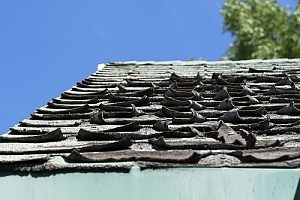Table of Contents
 Solid winds and storms are some of the most detrimental features your roof will expertise throughout its life span. When your roof should really be capable to stand up to significant storms, often winds are so robust that even the most sturdy roofing substance does not stand a probability.
Solid winds and storms are some of the most detrimental features your roof will expertise throughout its life span. When your roof should really be capable to stand up to significant storms, often winds are so robust that even the most sturdy roofing substance does not stand a probability.
No matter if from slipping particles or the wind alone, it is essential to be in a position to detect roof damage just after a storm so you can just take the required action.
How Sturdy Do Winds Have to have To Be To Injury a Roof?
Most wind damage from thunderstorms is induced by straight-line winds, also referred to as downbursts. The speed of these winds will determine the extent of problems they ultimately result in:
- 25 to 30 mph winds cause large branches to sway. You’ll also hear whistling seems in close by power and phone lines.
- 30 to 40 mph winds make complete trees shift and sway.
- 40 to 45 mph winds split twigs and modest branches.
- 45 to 55 mph winds snap significant branches and weak tree limbs and lead to slight structural destruction.
- 55 to 65 mph winds produce reasonable structural and tree damage.
- Around 65 mph winds make major to significant structural and tree harm.
Winds above 45 mph are those people that householders should pay back notably shut interest to as they pose the most sizeable risk of roof injury.
Irrespective of irrespective of whether your roof damage is in depth or slight, you really should phone for a qualified roof inspection. Depending on the problems, you may perhaps require to file an insurance claim and ask for roof maintenance from a educated contractor.
Signals of Roof Wind Hurt
Right after the storm dies down, head outside the house to visually inspect for problems to your roof.
Signals that suggest your roof sustained significant wind hurt include:
- Shingle hurt: Missing, peeling, curling, or or else visibly broken shingles are a certain sign that solid winds have wreaked havoc on your roof.
- Granule decline: While granule loss occurs normally in excess of time, major horizontal lines, bare places, and cracks are symptoms that the seal on your shingles has damaged.
- Water leaks: There may well be a gap in your roof that is not as noticeable exterior. Inspect the walls and ceilings within your home for water damage.
- Debris: When this does not require the roof by itself, the existence of large branches and other particles on the ground can give you some indicator of roof problems.
- Lifting shingles: Mild winds may perhaps demonstrate residual destruction from a latest storm if you glimpse and hear for flapping on your roof. You may well will need an inspection to pinpoint which shingles have loosened close to the nails.
- Divots: Generally forming at the edge of your shingles right after blunt influence, divots generally occur with broken seals, which need to be resolved rapidly by a roof maintenance specialist.
What Ways Should You Consider Soon after Roof Wind Injury?
If a serious storm has a short while ago ripped by your Virginia community, below are a few methods you can consider to make certain your roof hasn’t been broken (and some more ways to acquire if it is):
- Examine your assets for visible indicators of injury subsequent a storm.
- Properly thoroughly clean up any debris about your lawn.
- Conduct a visible inspection to discover drinking water leaks on ceilings and partitions.
- Photograph any hurt you do discover.
- Call Beyond Exteriors for a absolutely free, on-website, no-obligation roof fix quote.
- File an insurance policy declare with your supplier.
- Program your roof restore.
Has your roof sustained sizeable wind damage following a heavy storm? Contact Outside of Exteriors at (703) 830-0863 to request your roof repair service quotation currently!
